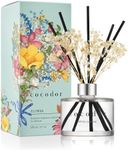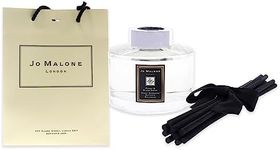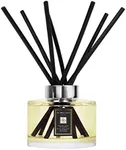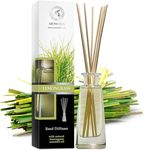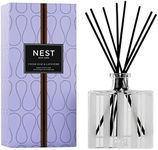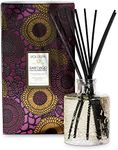Buying Guide for the Best Reed Diffusers
Choosing the right reed diffuser can make a big difference in how your space smells and feels. Reed diffusers are a popular way to add a pleasant fragrance to your home without the need for flames or electricity. When picking a reed diffuser, it's important to consider a few key features that affect how well it works, how long it lasts, and how it fits into your lifestyle and space. Understanding these features will help you select a diffuser that matches your preferences and needs.Fragrance TypeThe fragrance type refers to the scent or blend of scents used in the diffuser. This is important because the right fragrance can set the mood in your space, whether you want something calming, energizing, or refreshing. Fragrances can be floral, woody, citrusy, spicy, or even unscented for those sensitive to smells. When choosing, think about where you’ll use the diffuser—lighter, fresher scents work well in bathrooms or kitchens, while warmer, deeper scents are great for living rooms or bedrooms. Your personal preference and the atmosphere you want to create should guide your choice.
Oil BaseThe oil base is the liquid that carries the fragrance through the reeds. This is important because it affects how well the scent is dispersed and how long the diffuser lasts. Common bases include natural oils, synthetic oils, or a mix of both. Natural bases, like essential oils, are often preferred for their purity and subtlety, while synthetic bases can offer stronger, longer-lasting scents. If you have sensitivities or prefer a more natural product, look for diffusers with essential oil bases. If you want a stronger or more persistent scent, a synthetic or blended base might be better.
Reed Material and NumberReeds are the sticks that absorb the oil and release the fragrance into the air. The material and number of reeds affect how much scent is released and how evenly it spreads. Most reeds are made from rattan, which is effective at wicking oil, but some are made from synthetic materials. More reeds generally mean a stronger scent, while fewer reeds give a lighter fragrance. If you want a subtle scent, use fewer reeds; for a more noticeable aroma, add more. Also, consider the size of your room—larger spaces may need more reeds for the scent to be noticeable.
Bottle Size and DesignThe bottle size determines how much oil the diffuser holds, which affects how long it will last before needing a refill. Larger bottles last longer but take up more space, while smaller bottles are easier to place in tight spots but need to be refilled more often. The design of the bottle also matters for aesthetics, as it will be visible in your room. Choose a size that fits your space and a design that matches your decor. If you want a low-maintenance option, go for a larger bottle; if you like to change scents often, a smaller one might be better.
LongevityLongevity refers to how long the diffuser will continue to release fragrance before the oil runs out. This is important if you want a set-it-and-forget-it solution. Longevity depends on the oil base, bottle size, number of reeds, and room conditions like airflow and temperature. If you want a diffuser that lasts a long time, look for larger bottles, thicker oils, and use fewer reeds. If you prefer to change scents frequently or don’t mind refilling, longevity may be less important.
Refill AvailabilityRefill availability means whether you can easily get more oil for your diffuser once it runs out. This is important for sustainability and convenience. Some diffusers are designed to be refilled, while others are meant to be replaced entirely. If you want to reuse your diffuser and reduce waste, check that refills are available for the scent and brand you choose. If you like to try new scents often, you might not need to worry as much about refills.
